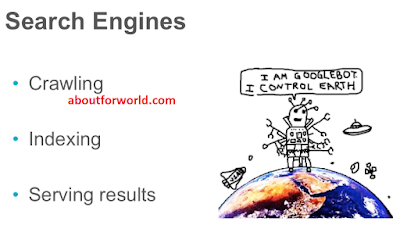It is the web indexes that at long last convey your site to the notification of the imminent clients. Subsequently it is ideal to know how these web indexes really function and how they show data to the client starting a pursuit.
There are essentially two sorts of internet searchers. The first is by robots called crawlers or arachnids.
Web indexes use creepy crawlies to record sites. When you present your site pages to an internet searcher by finishing their required accommodation page, the web index creepy crawly will list your whole website. An "arachnid" is a computerized program that is controlled by the web crawler framework. Creepy crawly visits a site, read the substance on the genuine site, the site's Meta labels furthermore take after the connections that the site associates. The creepy crawly then returns all that data back to a focal safe, where the information is listed. It will visit every connection you have on your site and record those destinations also. A few creepy crawlies will just file a specific number of pages on your site, so don't make a site with 500 pages!
The creepy crawly will occasionally come back to the locales to check for any data that has changed. The recurrence with which this happens is controlled by the arbitrators of the web index.
A bug is verging on like a book where it contains the list of chapters, the genuine substance and the connections and references for every one of the sites it finds amid its pursuit, and it might list up to a million pages a day.
When you request that an internet searcher find data, it is really seeking through the file which it has made and not really looking the Web. Diverse web indexes produce distinctive rankings in light of the fact that not each internet searcher uses the same calculation to seek through the records.
Something that a web search tool calculation filters for is the recurrence and area of watchwords on a page, however it can likewise distinguish manufactured catchphrase stuffing or spamdexing. At that point the calculations examine the way that pages connection to different pages in the Web. By checking how pages connection to each other, a motor can both figure out what a page is about, if the watchwords of the connected pages are like the catchphrases on the first page.


Post a Comment